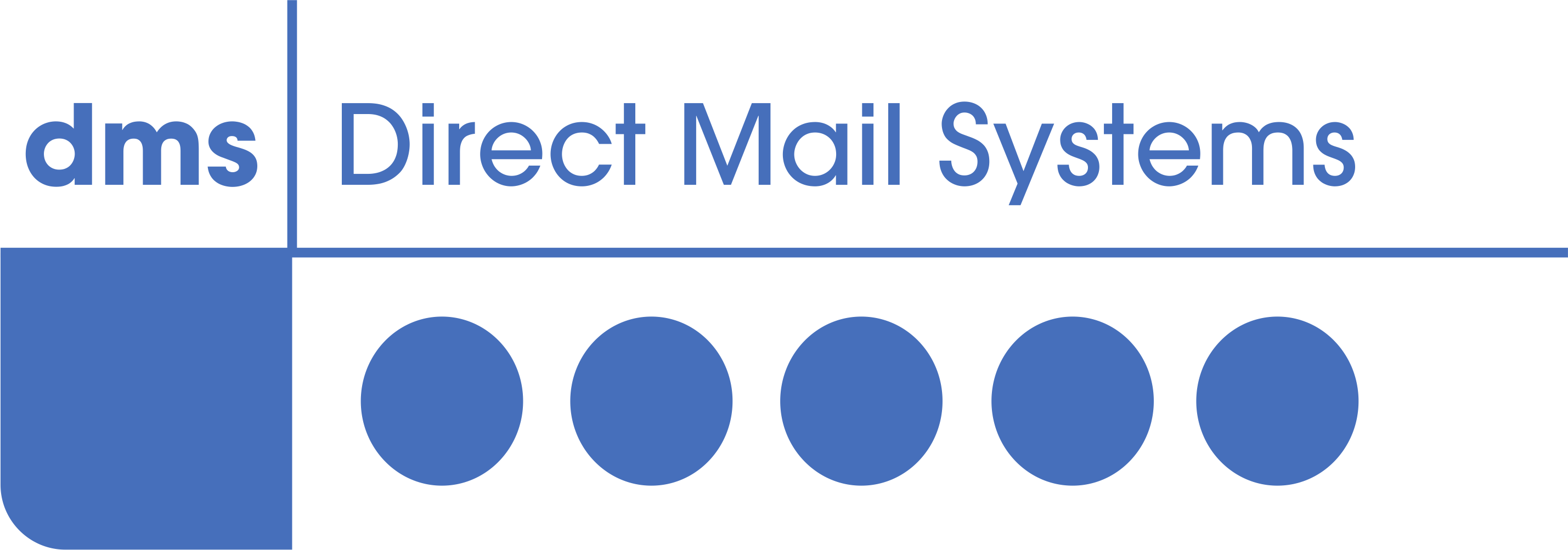You want to get started with direct mail but where do you start? There are many options within the direct mail world, so we’ve put together the ultimate guide to sizing and formatting so that you know what your options are, and what each type is suited to and can feel confident communicating your needs when talking to a direct mailing house.
- Importance of Understanding Sizing & Formatting in Direct Mail
- What Are The Most Common Direct Mail Sizes & Formats?
- Can You Create Custom Sized Direct Mail?
- Formatting Essentials for Direct Mail
- Testing Different Formats
- Direct Mail with DMS
Importance of Understanding Sizing & Formatting in Direct Mail
It’s important to understand all the options available to you when planning out your direct mail campaign so that you can have realistic expectations of the outcome, opportunities, costs, and any limitations. Understanding sizing and formatting in direct mail can also give you confidence when speaking to a direct mail or print house, ensuring you both understand the request and are on the same page in terms of the final result.

What Are The Most Common Direct Mail Sizes & Formats?
There are a variety of direct mail sizes and formats, which can become overwhelming. Below, we’ve laid out the most common sizes and formats of direct mail that companies opt for to communicate their messages to their audiences.
Postcards
Postcards are some of the most popular formats of direct mail, due to their simple format that allows for good readability and affordability. In facts, 57% of companies use postcards as forms of direct mail.
The standard postcard size is A6 (105 x 148mm), however, larger postcards and custom sizes can also be achieved. Other popular sizes include:
- Square Postcards: 120 x 120mm
- Medium Postcards: 127 x 178mm
- A5 Postcards: 214 x 152mm
Letters
Just like with postcards, there are standard sizes of letters to choose from and 51% of companies use letters as part of their direct mail campaigns. Whichever you choose will depend on the type of letter you want to send your recipients.
Standard letters are good for greeting cards, bills and any other format that can be folded or fit into a standard envelope. Alternatively, large letters are best suited for A4 documents that can’t be folded such as certificates, magazines or legal documents.
- Standard Letter: 16.5 x 24cm
- Large Letter: 35.3 x 25cm
Folded Self-Mailers
Folded self-mailers can vary in size and are sometimes considered a more bespoke or custom format. However, they are often folded to 8.5 x 5.5 inches. The benefit of folded self-mailers is that they don’t require an envelope as the address is printed onto the mailer, making them potentially more cost-effective.
Catalogues, Brochures & Flyers
Catalogues, brochures and flyers are all other formats of direct mail which can be used to promote new or existing products or services, brand information or other messaging. These types of direct mailers don’t have standard sizes, but instead often fall into the sizes of postcards, letters or large letters (ranging from A6 through to A4).

Can You Create Custom Sized Direct Mail?
You don’t always have to go with the standard sizes of direct mail! Many direct mail houses allow you to produce custom sizes, however, they will tend to incur a higher cost due to the bespoke aspect. However, many companies feel it is well worth the investment as it creates a unique and engaging mailer that stands out from the competition.
Formatting Essentials for Direct Mail
The way in which a direct mailer is formatted can immersively influence its engagement and therefore success rate. It’s thus important to understand the essentials of formatting when it comes to designing and producing your direct mail campaign, as well as understanding which aspects may incur higher costs.
Layout & Design
Layout and design are arguably the most important aspects of your direct mailer. It needs to grab the recipient's attention, hold it, convey the required information and trigger the reader to perform a required action, whether that be RSVP-ing to an event or visiting a website.
Ensure the lead message is clear and easy to read and understand. Too many messages could confuse the reader, so keeping it simple is key. A call to action (CTA) tells your recipient what you want them to do, e.g. call a number or use a discount code. The CTA therefore needs to be compelling and visually appealing to catch their attention, ensuring it doesn’t get lost in the rest of the design,
Addressing
When it comes to formatting your direct mailers, make sure to allow space for postage in the upper right-hand corner, particularly if you are sending a postcard or self-mailer, as there will be no envelope. Of course, your address data needs to be correct and accurate to ensure strong deliverability, and you will also need to add space for your return address, usually in the upper left-hand corner or on the back of the envelope, in case the item can’t be delivered.
Imagery
High-resolution imagery and graphics are key to producing a high-quality direct miler. We recommend using images of at least 300 dpi to avoid any pixelation. Also, choose images that are relevant, support your messaging and will resonate with your audience.
Printing & Paper
The type of paper and its finish are also an important part of your direct mailer and shouldn’t be overlooked. Firstly, the quality of the paper and materials you use can say a lot about your company and brand and secondly, some materials are best suited for certain formats of direct mail, so it’s important to understand what's what.
For instance, postcards are best suited to thicker cardstock or paper that’s 300gsm or more to ensure they are sturdy and don’t bend during postage. On the other hand, Flyers and brochures are usually printed on 150gsm. A thicker cardstock will usually emit a more premium feel too, which is worth considering.
Paper finishes include matte, glossy, satin or UV coating, all of which will give a different feel and look to your direct mailer. It is also worth noting that the different paper finishes can impact the finish and colours of any imagery or graphics. Your mailing house should be able to advise on this and even give you examples or samples.

Testing Different Formats
Like with all marketing strategies, carrying out testing is always recommended in order to analyse the results of each campaign, inform future decision making and further optimise future campaigns. Testing different types of direct mail such as a postcard versus a folded self-mailer, or a catalogue versus a letter is a good way to see which format best suits an audience.
Direct Mail with DMS
DMS are experts in all things direct mail and have supported leading organisations across all sectors over the years in delivering successful direct mail campaigns. Our knowledgeable team can advise on the best formats to suit your campaigns and budget requirements, and are on hand at all stages of your camping, from printing and production through to data capture.
Get in touch by clicking here to get started & for a free quote.

